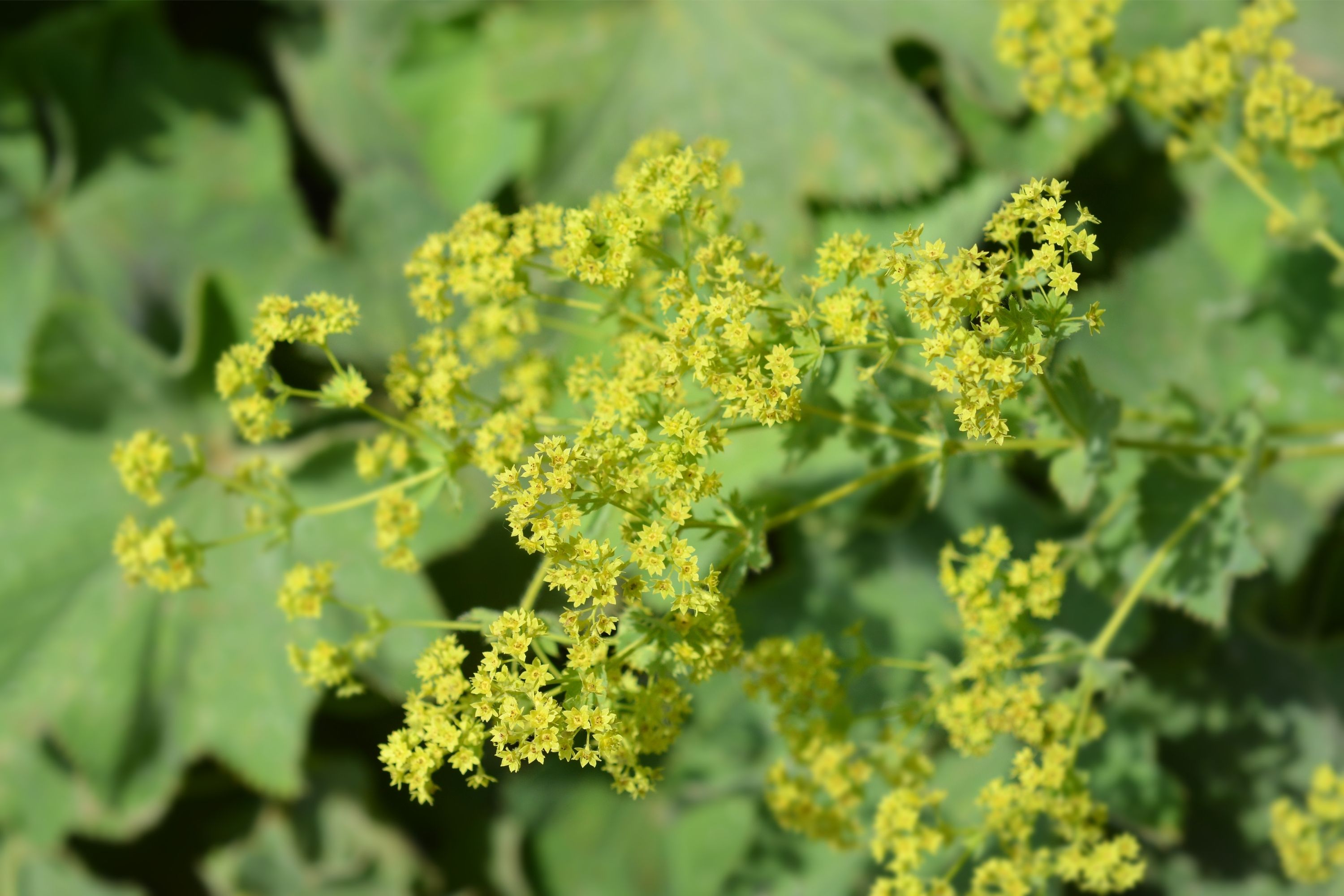Diadem lady's mantle
(Alchemilla diademata)

Description
Alchemilla diademata, also known as the diadem lady's mantle, is a species of the genus Alchemilla endemic to Lebanon. The plant has been commonly used in folk medicine in Lebanon and its promising bioactive properties have been subject to a number of studies. Alchemilla diademata has an erect 10 to 15 cm (3.9 to 5.9 in) high stem. The stem is highly pubescent at the base, the trichomes become less dense at the tips. The leaves are basal and measure 3 to 4 cm (1.2 to 1.6 in) wide and 2 to 3 cm (0.79 to 1.18 in) wide; they resemble lobed kidneys with an oval with an inward curve on one side The leaves are incised to the third into 7 to 9 lobes, each of them fringed by 6 to 7 teeth on each side of the lobes. The teeth end with bristles and are slightly connivent. The leaf underside is hispid and its sinus is cordate. The plant has long, membranous and brownish stipules; it has a yellow-green pedicellated and glabrous inflorescence. The ovoid flowers appear from May to July, they produce ovoid and urn-shaped fruits. The plant is only found on the slopes of Mount Sannine in the Mount Lebanon range; it favors humid sandstone. Alchemilla is a genus of herbaceous perennial plants in the family Rosaceae, with the common name lady's mantle applied generically as well as specifically to Alchemilla mollis when referred to as a garden plant. The plant used as a herbal tea or for medicinal usage such as gynaecological disorders is Alchemilla xanthochlora or in Middle Europe the so-called common lady's mantle Alchemilla vulgaris. There are about 700 species, the majority native to cool temperate and subarctic regions of Europe and Asia, with a few species native to the mountains of Africa and the Americas. Most species of Alchemilla are clump-forming or mounded perennials with basal leaves arising from woody rhizomes. Some species have leaves with lobes that radiate from a common point and others have divided leaves both are typically fan-shaped with small teeth at the tips. The long-stalked, gray-green to green leaves are often covered with soft hairs, and show a high degree of water-resistance (see Lotus effect). Green to bright chartreuse flowers are small, have no petals and appear in clusters above the foliage in late spring and summer.
Taxonomic tree:







